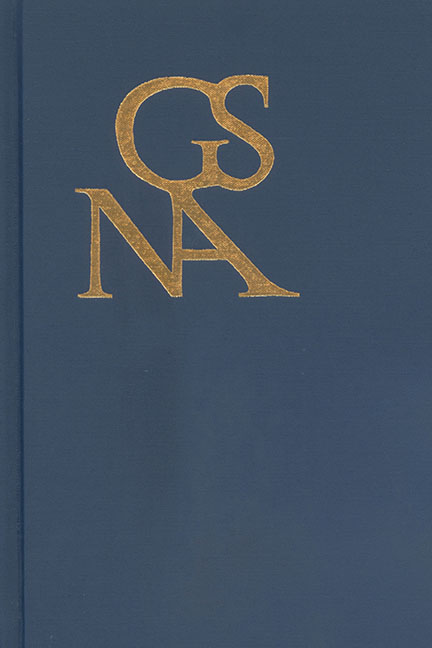Maura E. Hametz and Heidi Schlipphacke, Eds. Sissi’s World: The Empress Elisabeth in Memory and Myth. New York: Bloomsbury Academic, 2018. 393 Pp., 30 Illustrations.
Published online by Cambridge University Press: 28 October 2020
Summary
Hametz and Schlipphacke's Sissi's World: The Empress Elisabeth in Memory and Myth explores various manifestations of Sissimania around the world, including Sissi-inspired tourism and Sissi facebook groups. Although there are references to the historical Elisabeth, the volume is primarily interested in Sissi as an iconic figure. Hametz and Schlipphacke's introduction draws on Mosse, Halbwachs, Benjamin, and Barthes to highlight the importance of memory, myth, and nostalgia in the reception of the Austrian empress, who remains little known in the United States. They link the emergence of Sissimania to the decline of the Habsburg empire but also argue that all figurations of Sissi are invariably beholden to the respective Zeitgeist. If there is a through line in the reception of Sissi, it lies in the stark contradictions that mark her life and image: she was an aloof aristocrat and a champion of the empire's minorities; a rebel who resisted the constraints of the Austrian court and a slave to self-chastising dieting and exercise regimes.
The first section of the volume, entitled “Memory,” opens with Christiane Hertel's essay on Ulrike Truger's marble sculpture Elisabeth—Zwang—Flucht— Freiheit. Hertel discusses Elisabeth—Zwang—Flucht—Freiheit in the context of its placement in Vienna, of Truger's other works and of Franz Xaver Messerschmidt's sculpture of Maria Theresia as Queen of Hungary. She posits that the sculpture is caught in a permanent state of tension, as Truger folds three figures into one. Echoing the baroque concept of “Dreiansichtigkeit,” Truger avoids sublation (Aufhebung) since no one view absorbs the other. In the following article, Beth Ann Muellner argues that the Sissi Museum in Vienna's Hofburg functions as a vehicle of nostalgia. Muellner pays special attention to the exhibit's focus on corporeality conveyed through death masks and clothing and explores how such corporeality encourages “innervative encounters” in the Benjaminian sense.
Judith Szapor and Andras Lenart trace Sissi's fate in postcommunist Hungary. They tie Hungary's increasing openness toward the West in the 1990s to a newfound appreciation of the Habsburg dynasty, manifest in the focus on Sissi in the restored Gödöllö Royal Palace near Budapest. Sissi's prominent status in Hungary is rooted in the empress's love for Hungarian culture and in her only political intervention: Sissi helped to broker the 1867 compromise of the Dual Monarchy that eased the rift created by the 1848 revolution in Hungary.
- Type
- Chapter
- Information
- Goethe Yearbook 27 , pp. 363 - 365Publisher: Boydell & BrewerPrint publication year: 2020



